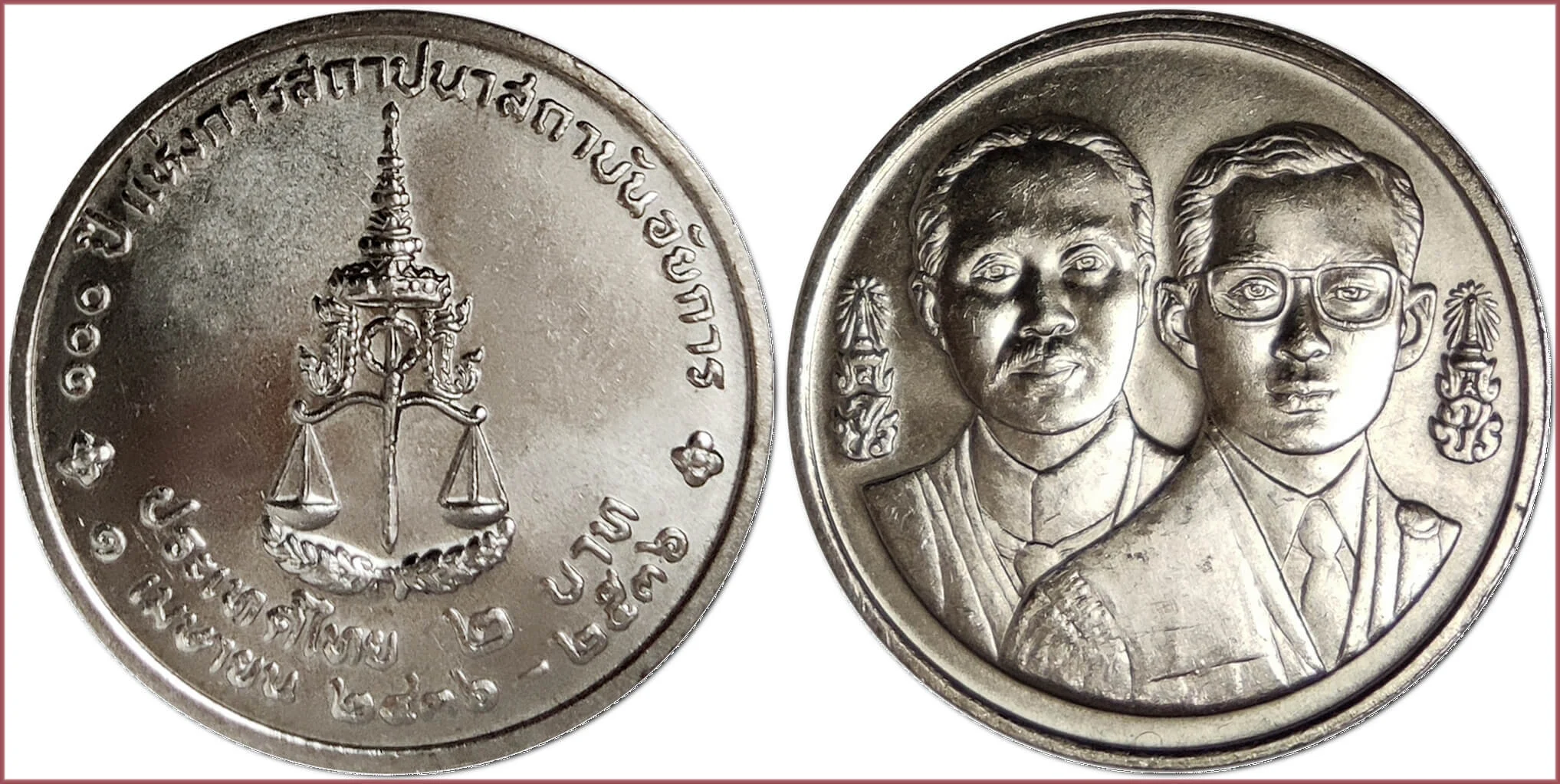BAHT: COIN OF THAILAND
2 baht, 1993: Kingdom of Thailand
Commemorative coin: 100th Anniversary of the Attorney General's Office (๑๐๐ ปี แห่งการสถาปนาสถาบันอัยการ) of Thailand /earlier, before 1939, — Siam/.
Date on coin: ๒๕๓๖ (2536).
2536 by the Buddhist calendar (Calendar of the Lord Buddha) = 1993 (Gregorian calendar).
ประเทศไทย ๒ บาท ๑ เมษายน ๒๔๓๖-๒๕๓๖: Thailand, 2 baht - 1 April, 1893-1993.
Stylized scales (symbol of justice).
King of Siam in the late 19th century Chulalongkorn and the king of modern Thailand Bhumibol Adulyadej.
Mintage: 1.000.000.
- Copper-nickel plated copper: 22 mm - 7.3 g
- Reference price: 2.0$
COIN BAHT — WHERE & WHEN (coins catalog: by names & emitents)
- KINGDOM OF SIAM (1860-1939: baht = 4 salung = 8 fueang = 32 pai = 64 att = 128 solot; from 1897: baht = 100 satang) + KINGDOM OF THAILAND (1939-...; baht = 100 satang)
The name of the baht coin most likely comes from the term in Sanskrit, which means "quarter" — 1/4 tael (ancient weight).
Baht has long been known in Indochina as a measure of the weight of precious metals (gold and silver), which is approximately 15 grams (depending on the use). Over time, beginning in the 19th century, the name became attached to the currency of Thailand, replacing the tical (in Sanskrit, the word "tankala" means "silver coin with a mark"). Until 1860, the baht was not made in the form of ordinary coins, but in the form of pieces of silver/gold (so-called bullets).

